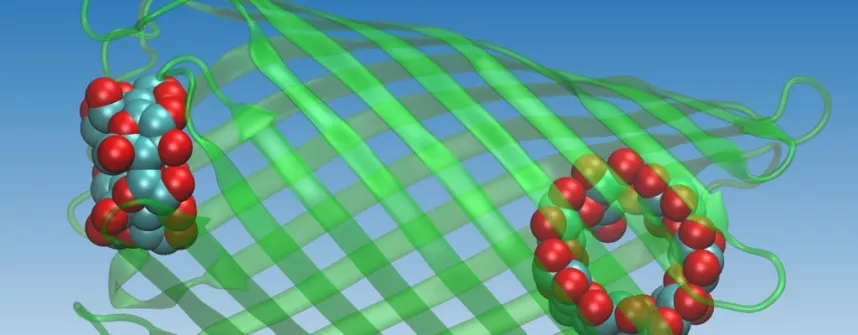Biophysicists at Jacobs University characterize the diffusion of bulky molecules through a membrane pore at atomic level
,
Biophysicists at Jacobs University have added a piece to the puzzle of the underlying molecular processes within Klebsiella oxytoca bacteria. Their new findings will play an important role in the research to fight antibiotic resistance and the challenge to disocver new antibiotics. The results of their research have just been published in the renowned journal PNAS.* Matthias Winterhalter, Professor of Biophysics, and Ulrich Kleinekathöfer, Professor of Theoretical Physics, have been able to show how at atomic level bulky molecules spread through membrane pores of Klebsiella bacteria, a process referred to as diffusion. Since the outer membrane of Gram-negative bacteria as seen in the analyzed Klebsiella bacteria, forms a protective layer, these bacteria have passive diffusion channels and active transporters to acquire ions and nutrients. Together with a crystallographer from the University of Newcastle, experimental and computational biophysicists in the workgroups of Prof. Winterhalter and Prof. Kleinekathöfer have succeeded in unravelling atomic details of the passive transport of cyclodextrins, i.e., compounds made up of sugar molecules bound together in a ring with a diameter of up to 15 Ångstrom (1 Ångstrom = one ten-billionth of a meter). The transport of the cyclodextrins is facilitated by a bacterial membrane pore called CymA. Up to now it has always been assumed that molecules of such a realtively large size in atomic terms were only taken up by bacteria through active transporters requiring energy. An assumption which has now been shown to be incorrect. The researchers employed different biophysical methods in their study. The molecular structure of the channel CymA was determined by using X-ray crystallography, its transport properties characterized with the help of single channel electrophysiology while the connection between the two approaches was obtained using molecular dynamics simulations. By combining these diverse techniques, a unified picture emerged. “We have found that the CymA pore contains a flexible “plug” which can open and close the membrane pore for bulky molecules,” explains Prof. Winterhalter. “Experiments and simulations clearly showed that cyclodextrin molecules can pass the pore while being in its open state. Moreover, initial details of the opening mechanism were unraveled, “adds Prof. Kleinekathöfer. The present findings are an important step into obtaining a picture of the process underlying moleculare transport in bacteria. Prof. Winterhalter and Prof. Kleinekathöfer highlight that understanding transport processes across bacterial membranes is also a key problem in the fight against antibiotic resistance which is one of their research foci. Prof. Kleinekathöfer and Prof. Winterhalter, who jointly conducted the research, are members of the New Drugs 4 Bad Bugs (ND4BB) consortium funded within the Innovative Medicines Initiative and part of a Marie Skłodowska-Curie Training Network funded by the EU. Scientists from these two European initiatives currently work on understanding the transport across baterical membranes, a topic of outmost importance in recent antibiotics research. *B. van den Berg, S. P. Bhamidimarri, J. D. Prajapati, U. Kleinekathöfer, M. Winterhalter, “Outer membrane translocation of bulky small molecules by passive diffusion”, Proc. Natl. Acad. Sci. USA (in press, 2015) DOI:10.1073/pnas.1424835112 Contact: Ulrich Kleinekathöfer | Professor of Theoretical PhysicsMathias Winterhalter | Professor of Biophysicsu.kleinekathoefer [at] jacobs-university.de , Tel: +49 421 200-3523m.winterhalter [at] jacobs-university.de , Tel: +49 421 200-3248
